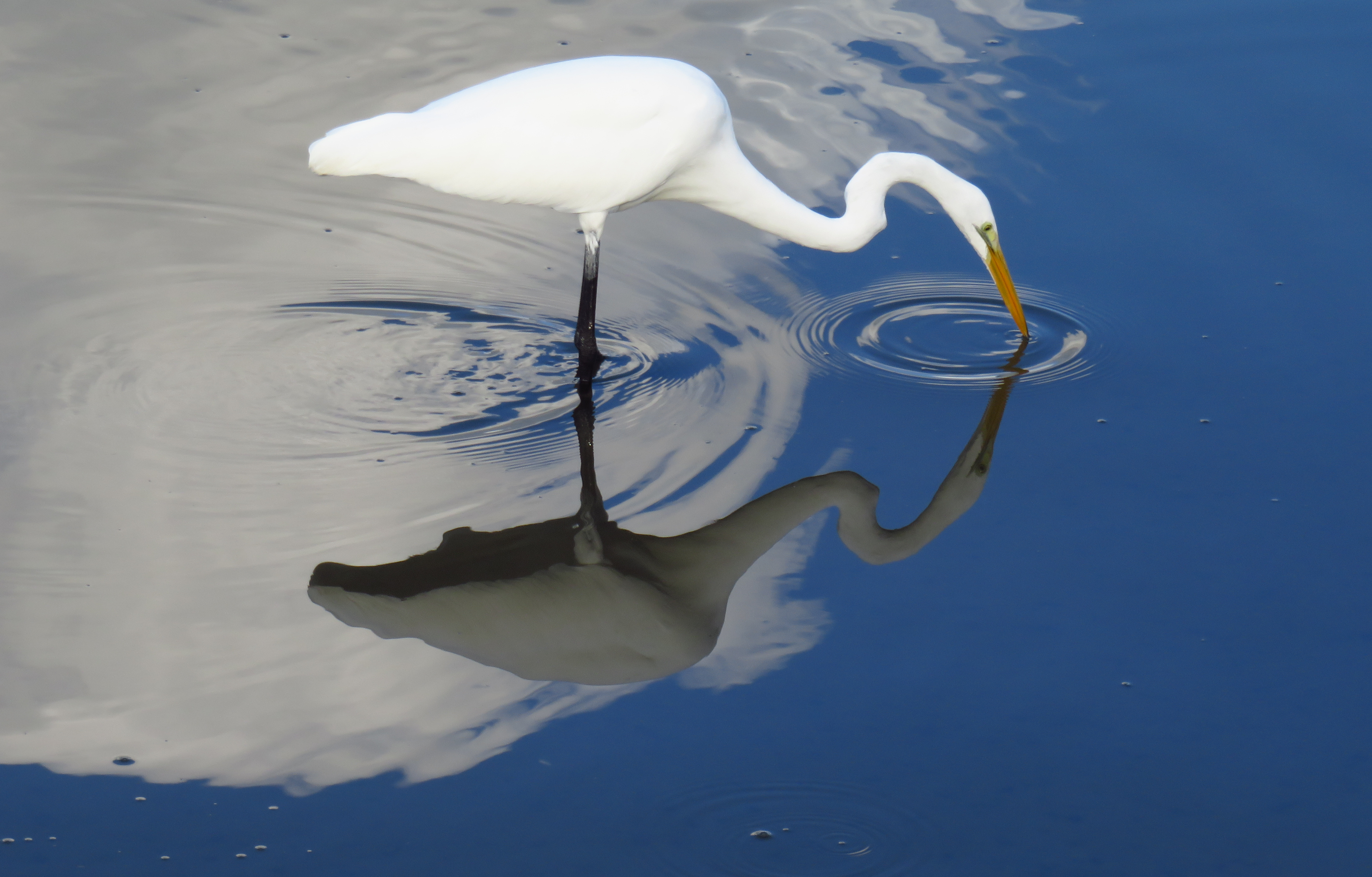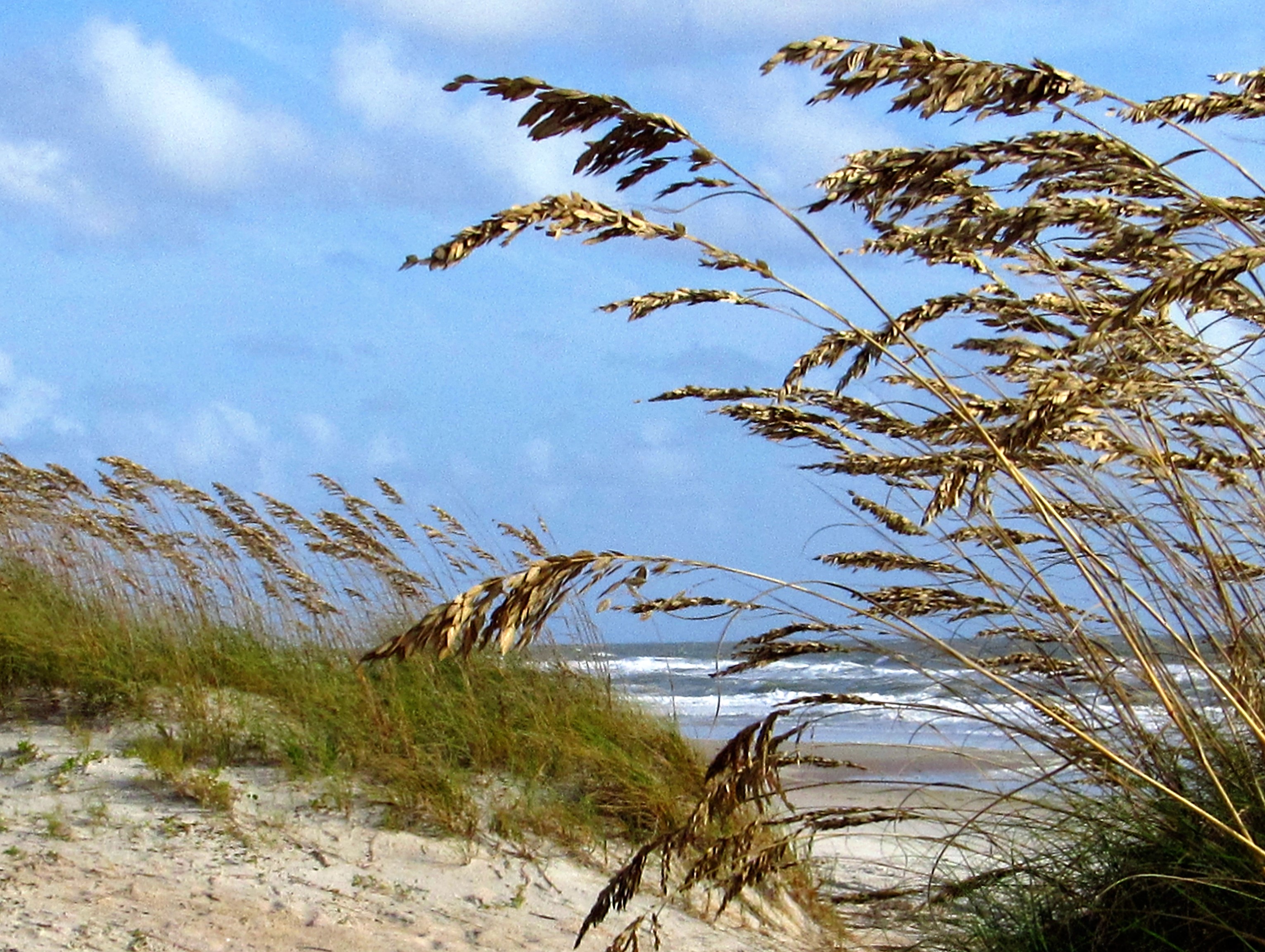Multiple environmental and political issues threaten Florida's sanctity, natural beauty, wildlife and actual future existence. This page is dedicated to current issues that affect not only Nassau County, Fla., but other geographical areas as well. Please be not only cognizant - but also diligent in your efforts to help protect and preserve our natural environment. Thank you.
Living Green
Right Whale Update - 2020
Right Whale Update - 2019
Right Whale Update - 2018
Amelia River Dead Zone
Fort Clinch
Living Green
JPMorgan Chase Sets Insufficient Emissions "Intensity" Targets For Its Dirtiest Financing
 May 13th, 2020: JPMorgan Chase released its 2030 interim emissions “intensity” targets for its financing of oil and gas, electric power, and auto manufacturing, following the bank’s October commitment to align its financing activities with the goals of the Paris Agreement. While setting sector-specific interim targets as part of a broader long-term climate strategy is critical, JPMorgan Chase exclusively setting intensity reduction targets — greenhouse gas emissions per unit of production — for some of its dirtiest financing is insufficient and provides the bank cover for their overall emissions to continue going up.
May 13th, 2020: JPMorgan Chase released its 2030 interim emissions “intensity” targets for its financing of oil and gas, electric power, and auto manufacturing, following the bank’s October commitment to align its financing activities with the goals of the Paris Agreement. While setting sector-specific interim targets as part of a broader long-term climate strategy is critical, JPMorgan Chase exclusively setting intensity reduction targets — greenhouse gas emissions per unit of production — for some of its dirtiest financing is insufficient and provides the bank cover for their overall emissions to continue going up.
Since the Paris Agreement was adopted in late 2015, JPMorgan Chase has provided $317 billion in fossil fuel financing ― 33% more than any other private bank in the world. In that time, JPMorgan Chase has also been the world’s largest financier of companies actively engaged in expanding fossil fuel operations. Last month, JPMorgan Chase’s CEO Jamie Dimon, sought to excuse the bank’s continued financing of fossil fuels in his influential annual letter to shareholders.
To align with the Paris Agreement, JPMorgan Chase should make ending expansion of fossil fuels a precondition for financing clients involved in coal, oil and gas, commit to phasing out its fossil fuel financing, on a timeline consistent with limiting climate change to 1.5°C, and end their support for projects and companies implicated in human rights abuses, including Indigenous rights abuses, such as their support of Enbridge’s Line 3 pipeline in northern Minnesota.
In response, Sierra Club financial advocacy campaign manager Ben Cushing issued the following statement:
“Setting interim climate targets aimed at some of the most polluting sectors like oil and gas, electric power, and autos is a step in the right direction, but the fact that the world’s largest banker of fossil fuels is not setting absolute emissions reduction goals provides cover for JPMorgan Chase to continue to support the expansion of the fossil fuel industry. Oil and gas companies’ promises to reduce the emissions per barrel of oil while overall production goes up is a dangerous diversion from what really matters to addressing the climate crisis, and JPMorgan Chase is enabling that greenwashing. If JPMorgan Chase wants its ‘Paris-aligned’ pledge to be taken seriously, it needs to set out near-term targets for reducing its absolute emissions and put an end to its financing of fossil fuel expansion.”
Back to top
The 5 Worst Foods for Environmentalists to Eat
You are not going to like the list, but it is time to start making a change for the environment.
1. Bluefin Tuna
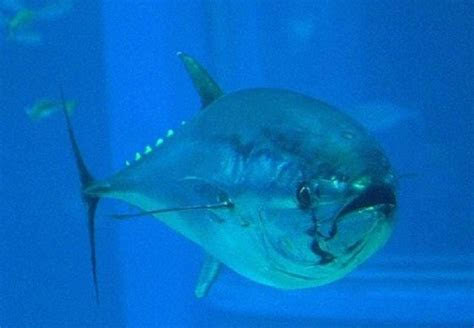
We'll let Pulitzer Prize–winning food critic Jonathan Gold get on his soapbox for this one: "People need to stop eating bluefin tuna. Period. It'll be difficult because bluefin is uncommonly delicious and tends to be served at high-end sushi bars, where the fashion is to say 'omakase' and submit to the chef's will. But the numbers of these magnificent fish are dropping fast. If we don't stop eating them now, we'll stop in a few years anyway because there won't be any more." Carl Safina, who founded the Blue Ocean Institute, adds, "Because they're long-lived, bluefin populations don't stand up well to heavy fishing pressure—that's why they're so depleted. It's just too sad to eat them. Plus, big fish are high in mercury." To rein in your share of the overfishing disaster currently unfolding—bluefin stock is down by more than 96 percent from unfished levels—order a vegetarian roll instead.
2. Conventional Coffee

The problem with conventional coffee, according to Stephen Madigosky, an environmental science professor at Widener University, "stems from manipulating this shade-loving plant into one that's grown in full sunlight and requires substantial use of herbicides, pesticides, fungicides, and fertilizers. " He adds that biologically rich forests are cleared in favor of coffee crops, which devastates tropical species, especially migratory birds. Order organic java to cut out the pesticides, and choose shade-grown to protect rainforest biodiversity. Marc Lash, sustainability ambassador for FrontStreet Facility Solutions, points out that how you take your coffee makes a difference: "At Starbucks, a black cup of coffee has a carbon footprint of about 30 grams, whereas a venti caramel latte has one of about 420 grams."
3. Burgers
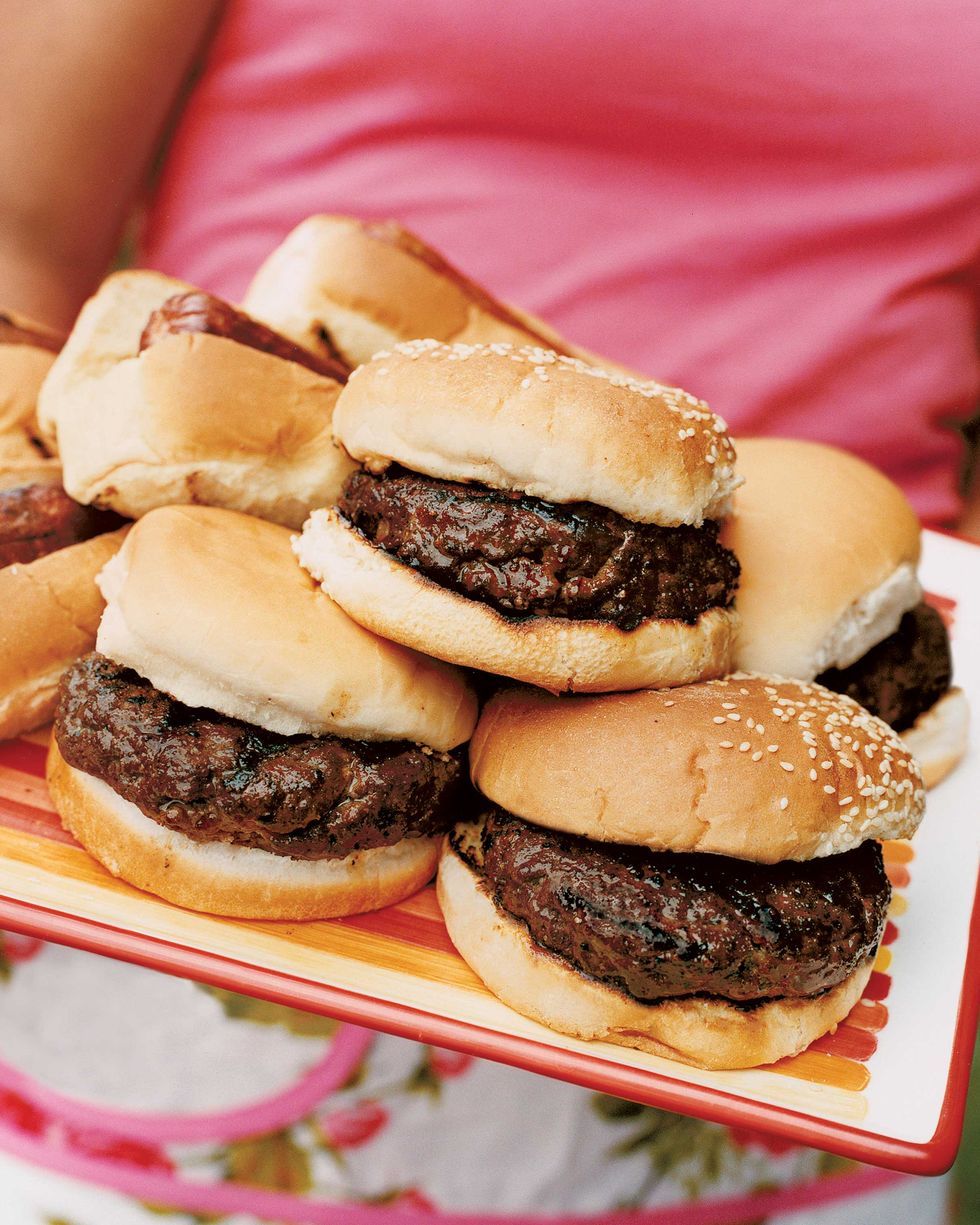
"Cheap burgers are environmental assassins," says Logan Strenchock, Central European University's sustainability officer. Feeding cows to turn them into FACTORY-FARMED BEEF often requires replacing tropical forests with fields of genetically modified corn and soy, which are laced with pesticides that pollute local waters. "It takes 10 to 14 pounds of grain-based feed for a cow to gain 1 pound of flesh," Strenchock says. "Once harvested, that flesh needs to be kept cold, consuming massive amounts of energy." If you must eat a dead cow, eat a grass-fed one, but even then, consider these words from Mary O'Brien, who directs the Utah Forests Program for the Grand Canyon Trust: "In the western U.S., cattle have the single most pervasive impact on public lands, depleting native biodiversity, increasing invasive exotics, diverting water, fouling streams, and baring the soil."
4. Genetically Modified Corn

"Genetically modified corn violates so many sustainability boundaries—destroying habitats, depleting soils, breaking nutrient cycles, polluting air and water, contaminating native maize varieties, and on and on," says Douglas Fox, a professor of sustainable agriculture at Unity College. Terry Walters, author of Clean Food(Sterling Epicure, 2012), says that such monocrops "put our bee population at risk and are creating superpests." She adds that corn's unhealthy offspring, high-fructose corn syrup, "takes a huge toll on the land, requires more pesticides and fertilizers over time as soil is depleted, and requires extensive processing." Lee Greene, who runs heirloom-food company Scrumptious Pantry, adds that relying on genetically modified crops "will continue to dramatically reduce biodiversity and drive historic fruits and vegetables to extinction."
5. Palm Oil

"Palm Oil is one of the largest causes of rainforest destruction," says Laurel Sutherlin, a Rainforest Action Network spokesperson. According to RAN, U.S. palm oil use has ballooned by 500 percent over the past 10 years—it's now in about half of all packaged foods. Christy Wilhelmi, author of Gardening for Geeks (Adams Media, 2013), points out that this oil can be produced only in tropical areas—so huge swaths of ancient rainforest in Indonesia and Malaysia have been bulldozed to plant new palms. "Eight million acres have been cleared and burned already," Wilhelmi says, "and as a result, the orangutan is on its way to extinction." In Indonesia, deforestation-related carbon emissions—most of which are from expanding palm plantations—surpass the amount of pollution caused by all U.S. cars, trucks, planes, and ships. To avoid palm oil, read the ingredients on packaged goods, especially cookies, crackers, and instant-noodle soups.
Which Green Career is Right for You?
Whether you're a recent grad or a seasoned professional considering a career change,
Now is the perfect time to look for your dream job. The Sierra Club can help you.
Take our short quiz to learn which eco-friendly gig might be the best fit for your personality.
Go to Green Career and find your green match.
Richard Jones, University of Miami’s sustainable building expert, converts his home into an eco-friendly structure.
article from U of Miami's Green Zone
It’s a Saturday, and in the four-bedroom, three-bath Jones home in South Miami, father Richard is in the kitchen, slicing carrots on a countertop table made of 100-percent-recycled office paper. In the laundry room, his wife is prepping a load of laundry for their energy-efficient washing machine, soaking the garments in water warmed by a solar hot-water heater. And in the Florida room, his daughter is reading a book under light powered by reflective solar tubes.
Although this one-story may look similar to other houses in the neighborhood, it’s definitely “greener” on the Jones side of the fence. An expansion and renovation initiated three years ago with the goal of becoming more environmentally conscious has converted the abode into a picture-perfect example of sustainable architecture at its best.
“It’s pretty much everything from soup to nuts,” says Jones, the University of Miami’s associate vice president for facilities design and construction, describing the extensive remodeling project that earned their home a Platinum rating—the highest obtainable—under the U.S. Green Building Council’s LEED (Leadership in Energy and Environmental Design) certification system. “We looked at almost every aspect of our home, from the air-conditioning system and insulation to the landscaping and finishes.”
Among the improvements:
- a reflective white roof that reduces heat gain and helps keep the house cooler
- solar tubes installed in closets and other areas of the house, making it unnecessary to turn on lights during the day
- LED lighting throughout the home
- high-efficiency Energy Star appliances
- a whole-house air purification system
- one-gallon flush toilets (older toilets can use up to 3.5 gallons per flush)
- drought-resistant landscaping
- rain barrels placed around the exterior of the home to capture rainwater, which is used for irrigation
- recycled materials used in the home’s expansion
When all the work was completed in 2009, the entire project added another 1,100 square feet to the home, nearly doubling its size, and the “green” upgrades earned the family a tax break from Uncle Sam. “We got federal tax credits for solar panels, solar hot water, and other energy-efficient improvements such as insulation, air conditioning, roof, and windows,” Jones explains. “Some of those programs are sun-setting, but solar, wind, and geothermal are good through 2016.”
Richard and his wife moved into the residence 11 years ago, when it was a 1,200-square-foot home, built in the tradition of mid-century architecture. As their family grew the Joneses knew they had to expand. But using standard building materials harmful to the environment was never an option. Richard wanted to go green. So the couple did their homework, reading everything they could find about green building practices and attending a major homebuilders show in Orlando, where they gleaned several ideas for sustainable products.
Richard’s role of spearheading UM’s green building initiatives also helped. He incorporated into his home’s redesign some of the basic sustainability strategies now in use in UM’s “green” structures such as the LEED-certified Clinical Research Building on the Miller School of Medicine campus.
“The general concept is pretty much the same,” says Jones, a graduate of UM’s School of Architecture. “The first thing we did, and probably the most important, was to cut down on our energy consumption, which meant doing a good job of sealing and insulating our home. Then we looked at different systems.”
The result has been a 64 percent decrease in the family’s energy consumption, even though the house has nearly doubled in size. Jones estimates that the family now saves about $3,000 to $4,000 a year in energy costs over a house of similar size.
Jones’s eco-friendly home is also helping to lower his family’s carbon footprint on the environment. In the United States, buildings account for 39 percent of total energy use, 12 percent of total water consumption, 68 percent of total electricity consumption, and 38 percent of carbon dioxide emissions, according to the U.S. Environmental Protection Agency.
But even though building greener is a growing trend in the commercial sector, the practice is not as prevalent among private homeowners. The high cost of building in such a fashion is one reason. “We’re not paying for the cost of what we’re getting in green materials so much as we’re paying for the process,” says Jacqueline James, a UM assistant professor of civil, architectural, and environmental engineering, whose area of expertise is in sustainable construction. “When anything is new, it takes longer to manufacture, longer to figure out, longer for the contractors and builders to get into it. It’s not something they’re used to doing every day. Right now building green is more expensive because it’s newer, and we’re still in the phase of trying to understand it. But as we get a little more used to the materials and processes, it’ll get cheaper and materials will be readily available.”
While many of the sustainable materials Jones used in his remodeled house cost more than conventional products, those extra costs will be absorbed by the lower electric and water bills, which will help him reach the break-even point soon.
Copyright: e-Veritas, University of Miami
How Much Your Green Habits Really Save
by Mary Mazzoni. (Mary is a student at Temple University in Philadelphia, Penn. She is an Editorial Intern for Earth911.com.)
Just how much plastic are you saving by toting that stainless steel water bottle around all the time? Did switching to paperless billing really save a tree, or just save you some hassle? Let’s break it down by numbers. Check out this list of little green habits to try. By the end you’ll be convinced that every little bit does count!
Turning off the faucet.
About 75 percent of the water used in the average home is used in the bathroom, according to the California Energy Commission. Leaving the water running while we brush our teeth or wash our faces only increases that number. It can be a tough habit to break, but here’s how much you’re really using. The numbers: The average bathroom faucet flows at a rate of two gallons per minute. Turning off the tap while brushing your teeth in the morning and at night can save a whopping 8 gallons of water per day, according to the EPA. That’s 240 gallons of water every month!That is 27,412 Gallons of Water a Year
Unsubscribing from junk mail.
Junk mail is seriously annoying, but how much paper is really being wasted by the endless flow of circulars, promotional fliers and copies of the same bill? The answer is – a whole lot. You can cut back on the junk mail on your doorstep by switching to paperless billing. The numbers: The amount of junk mail Americans receive every day could heat 250,000 homes, according to the National Park Service. And the EPA says we each use approximately one 100-foot-tall Douglas fir tree in paper each year – that’s bigger than the Rockefeller Christmas Tree.
Switching to Compact Flurescent lights (CFLs),
Not to knock Thomas Edison, but those incandescent light bulbs just have to go. Making the switch to compact fluorescent light (CFL) bulbs is a super-simple way to green up your home, but how much energy do they really save? The numbers: CFLs use only 32 watts of electricity – that’s one-third the wattage of their incandescent counterparts. Making the simple switch in your home will cut out 300 pounds of carbon emissions every year, according to CutCO2.org.
Fixing that leak.
A leaky faucet or a running toilet may not seem like a big deal, but repairing your leaks right away actually saves loads of water. If you can’t figure out how to fix a leaky faucet without a plumber, put a bowl under the leak to catch the dripping water, and use it in the kitchen or to water your house plants. For a running toilet, simply turn the water valve off until you can get it repaired. The numbers: A leaky faucet can waste more than 3,000 gallons of water every year, and a running toilet wastes about 200 gallons a day, according to the EPA.
Skipping polystyrene foam.
Polystyrene cups and plates are commonplace at many family gatherings and neighborhood barbeques, and foam to-go boxes at restaurants are almost impossible to avoid. But these products are difficult to recycle, especially once they’ve been contaminated with food residue. The numbers: Each year, Americans throw away 25 million polystyrene foam cups. That’s enough to circle the earth 436 times, according to the Oberlin College Resource Conservation Team.
Taking shorter showers.
It’s easy to zone out for a few extra minutes during a morning shower, but you can save way more water than you think by cutting a few minutes off your tub time. The numbers: Depending on your showerhead, you use 10-25 gallons of water every five minutes you spend in the shower, according to the EPA. So, you could be saving up to 5 gallons for every minute you shave off your shower time!
Using the microwave.
Don’t worry. We’re not suggesting you nuke grandma’s blue ribbon casserole. But when it comes to reheating or defrosting small amounts of food, it can be tricky to tell if opting for the microwave actually saves energy over using a stove or oven. The numbers: According to EPA estimates, if you’re reheating or thawing a small amount of food, you’ll use 50 percent less energy by putting it in the microwave over a conventional stove or oven.
Choosing reusable food storage.
It’s easy to throw some plastic wrap on some leftovers and stick them in the fridge. Storing them in a reusable container you’ll have to wash later may seem like more trouble than it’s worth, especially when that piece of plastic wrap looks so small and insignificant, but the numbers add up. The numbers: According to the National Park Service, America produces more than 250,000 square miles of plastic wrap every year – enough to shrink wrap the state of Texas.
Ditching disposable plastic water bottles.
Plastic water bottles are super convenient, and it can be tough to completely eliminate them from your daily routine. But cutting back on how many you use and remembering to recycle your plastics every time can make a sizeable dent in U.S. plastic consumption. Use a stainless steel water bottle to cut back on your need for plastics, and keep a designated place in your car or desk for plastic bottles you’re finished with but have no place to recycle. Take them home at the end of the day, and throw them in your curbside bin. The numbers: Americans use 25 billion plastic bottles every year, according to the Oberlin College Resource Conservation Team. If every American household eliminated or recycled just one out of every 10 plastic bottles they used, it would keep 200 million pounds of plastic out of landfills each year.
Giving the dryer a break.
Most of us don’t think too much about using the dryer. It’s quick and easy, and depending on where you call home, you can’t very well use a clothesline in the winter without getting your garments in a pretty stiff situation. Even if you use an energy efficient dryer, giving it a rest from time to time will seriously cut back on your energy use. The numbers: If you air dry your clothes for only six months out of the year, you can cut down 700 pounds of carbon dioxide emissions, according to CutCO2.org.
Here are some helpful tips for going green.
Find your cookware in the second-hand store or flea market.
They need to be cleaned and shined up but they work wonderfully, they save you money, you are recycling, and they don't have the harmful chemicals and materials that can end up in your food - as can happen with the cheap, new cookware.
Buying clothes - think green.
Some companies make clothing out of lower impact materials such as organic cotton and recycled plastics. Patagonia's Common Thread Recycling Program transforms worn-out garments into new ones. Also, hit the outdoor flea markets and find the bargains in second hand outfits. You can go funky and stay green.
Celebrate Sustainably.
If you’re attending a party or headed to a beach or park to celebrate, gather your friends to carpool there. If you’re the host, use paperless invites, recycle materials into decorations, and challenge your guests to recycle while in your home.
Think Green - think about packaging.
Packaging plays a big role in our impact on the planet, from the emissions related to producing the packaging, to the transport of them to the dump as they become garbage. You already know to stop buying water in plastic bottles, but you have a lot of other choices in packaging every day. Styrofoam vs paper, buying in bulk, avoiding cellophane wrap. Look for reusable or recyclable packaging....and, think about doing without a product if the waste produced is high.
Turn out the lights when not using a room.
Even low-energy use bulbs can't do as much as just going dark. And, what about lowering the wattage everywhere. Do you really need 100 watts to read?
When using the dishwasher: don't pre-rinse dishes, just scrape excess food off.
Limit your use of air-fresheners
They are bad for the earth and studies have shown they are bad for you as well. Instead, use 100% beeswax candles with 100% cotton wicks- they purify and clean the air.
SC Green Home

Greener homes are in the spotlight these days, but what about the other places where many of us spend huge chunks of our time--our offices? Some simple changes of habit can save energy and resources at work, and these small steps can be multiplied by persuading the powers-that-be at your workplace to adopt environmentally friendly (and often cost-effective) policies.
- Ramp up your recycling. Make it your habit and pass it along.
- Purchase supplies made with recycled material.
- Stop using those styrofoam cups. Bring your own mug.
Sign up for your Daily Green Tip from Sierra Club. If you sign up for The Green Life email newsletter, you will receive a new green tip in your inbox every day. Click Here.
Right Whale Update -- 2020
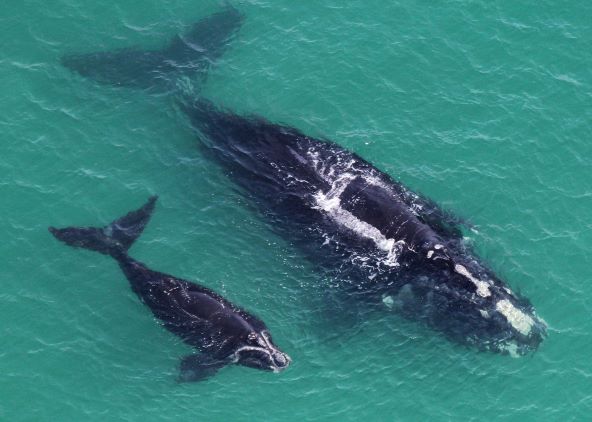
Very sad news to report. NOAA‘s partner, the Florida Fish and Wildlife Conservation Commission, spotted the 4th right whale calf of the season about 8 nautical miles off Georgia. Unfortunately the young whale has already been injured by what looks to be a propeller.
The injuries are concerning because of the severity and location of the wounds. One of the injuries appears to include damage to the calf's mouth which could hamper its ability to nurse and feed. Biologists estimate the newborn is just days old and the wounds were perhaps hours old.
The Mom is #2360, 'Derecha,' which means "right" in Spanish. Experts say the calf's two roughly parallel and s-shaped injuries were consistent with the propeller of a vessel.
Teams with the Georgia Department of Natural Resources (Wildlife Resources Division - Georgia DNR) and Clearwater Marine Aquarium Research (Clearwater Marine Aquarium) are out attempting (by air and sea) to try and find the mom/calf pair in order to assess the calf's condition.
The protection of these animals is literally in the hands of all mariners on the water and all businesses that service those vessels
NOAA is asking anyone with information regarding the calf's injuries and additional sightings to contact 1-877-WHALE-HELP (1-877-942-5343). The vessel that struck the animal may likely have propeller damage.
NOAA urges everyone to please give these animals their space. Mom/calf pairs spend the majority of their time at, or a few feet below the water's surface in the Southeast U.S. This is a critical and vulnerable time for right whale moms to bond with their calves - law requires staying away at least 500 yards by air (including drones) and by sea. . .
Derecha was first seen in December 1993. She is at least 27 years old. This is her 4th calf - she last gave birth in 2010.
Please remain alert, stay educated, and choose wisely how you operate your boat while traveling through a whale neonatal center
Click here for an article on the 2020 Right Whale calving season.
DEAD ZONE - IMPORTANT MESSAGE FROM FAITH ROSS, EXECUTIVE COMMITTEE
Right Whale Update - 2019
Seven rare right whale calves were spotted during the 2019 winter
birthing season off Florida's Atlantic coast.
Researchers say each new calf spotted this year is an encouraging sign
for the critically endangered whales. No newborns were spotted during
the 2018 calving season, and just five calves were counted during the
previous year.
Scientists estimate less than 400 North Atlantic right whales remain.
Right whales need to deliver 16 to 18 calves a year just to maintain
their current population.
Right whales typically migrate from the North Atlantic to give birth
off the coasts of Georgia and Florida from December through March.
In 2018, the Nassau County Sierra Club established a right whale
subcommittee called the Amelia Island Right Whale Action Group
(AIRWAG) to help raise local awareness of this gentle species that is
so critically endangered. For more detailed information you can
contact Julie Ferreira at 904-583-4388 or Candis Whitney at
904-759-0802.
Thank you very much in advance for your interest in participating with us!
Right Whale Update - 2018
Seven rare right whale calves have been spotted so far this winter off Florida's Atlantic coast.
Researchers say each new calf spotted this year is an encouraging sign for the critically endangered whales. No newborns were spotted during the last calving season, and just five calves were counted during the previous year.
Right whales typically migrate from the North Atlantic to give birth off the coasts of Georgia and Florida from December through March.
PLEASE TAKE ACTION NOW REGARDING FORT CLINCH STATE PARK
Locally we are facing a new management plan for Fort Clinch State Park.
As civilization closes in on Fernandina, our state park is increasingly finding itself poked at and assaulted by outside pressures and Florida’s growing population. Let's not allow our park to be dealt with as an under-utilized open space instead of something that should be preserved for all time.
Speak out now. It is imperative that citizens of Fernandina and surrounding community weigh in on the changes being suggested to our park structure and fight for sustainable tourism. In order for your opinion to be considered your comments must be made before March 30th when the public comment period closes.
Here are just a few of things which are worrisome:
SEA OATS- It's being determined that the harvest of sea oat seeds would be appropriate at our park as an additional source of revenue. (Pg. 7)- "For this park, it was determined that the harvest of sea oat seeds could be accommodated in a manner that would be compatible and not interfere with the primary purpose of resource-based outdoor recreation and conservation.... We know that the roots and stems of sea oats build and anchor sand dunes by trapping wind-blown sand. Sea oat seed harvesting for revenue would create a 'disturbance' for the health of the dunes because the smilax that once helped hold the dunes together has been impacted by deer so the sea oats are very important to our dunes. DEP feels that it is obligated to consider "compatible secondary uses" to increase revenue for parks. In the past, private companies were allowed to pick seeds in exchange for a bid number of seedlings which were used by the state park system. To now allow the picking of seeds strictly for revenue is no different than private industry seeking to harvest trees, to pick palmetto berries, or to graze cattle in the park. If our park itself needs to plant sea oats for restoration purposes, it can contract the harvest and seedling production under its existing authority without claiming the activity and revenue as a purpose of the park. Please state that some of the largest dunes in the state are in Ft. Clinch. This new language is not responsible management of our natural resources and should NOT be in the new management plan.
NEW RV SITES BEING ADDED: At the informational meeting the state park planner said that there needed to be "parity" between the the Atlantic Beach campground with its 21 sites and the Amelia River campground which has 41 campsites located in the oak hammock. Parity, why parity? We could cut down every tree and build campsites up and down the beach and there would still be a demand for camping just because it is near the beach. Enough is enough or there will be no end point. The management plan is calling to expand the Atlantic Beach campground to include 10 additional RV sites. Please tell the park service that this level of development is not sustainable nor wanted by our community. This area is a coastal grassland and has fragile plant communities needing protection.
TRAIL: Is the trail which is proposed to run between the Beach Campground and the pier area needed? Most people wanting to access the pier area would walk along the beach and/or along the road. If there are fears about vehicle/pedestrian conflicts then the park should enforce the 20 mph speed zone. The proposed trail would meander through what is now undisturbed coastal grassland that is utilized by wildlife. The grassland is a savannah type eco-system. People wandering along a trail is NOT needed. Conserve this area as wildlife habitat.
BATHROOM AND SHELTER- Let's keep Ft. Clinch WILD and protect the old-growth canopy. The undeveloped nature of the Fort is why people come and why we all like it so much. This new management plan calls for the picnic area just south of the Fort parking lot, which is in a heavily wooded area, to have a new bathroom and/or something like a porta-potty installed and plus a picnic shelter. There is no need for new bathroom facilities- people needing the bathroom can walk the 150 ft across the parking lot to the bathroom that is adjacent to the Visitor’s Center. There is no reason to impact environment by building these new facilities. No to both. No new manmade structures in this fairly natural area.
ALTERNATIVE ENERGY: On Pg. 7 it speaks about "alternative energy" in the plan- which is worrisome. Sierra Club was told that this will be taken out of the plan- but if it is not- it could mean installation of wind turbines or solar arrays. It should not be in the plan without clarifying detail. Alternative energy could also be "biomass harvesting" for wood chips ....
FISHING PIER: Sierra was told that there are no guarantees what type of pier we will get as a replacement. Will the new one stretch 1/3 mile out into the ocean- highly doubtful. It is understood that the pier was built in the wrong place originally, but before the hurricane engineers had developed an option to extend the life of the pier by 20 years by adding pile jacks and replacing sections. The engineers are currently saying the pier is too damaged to fix. Is this true? Could we push to have the pier re-evaluated by new eyes? If it costs two million to tear down and could take up to 10 years to rebuild- could that money be better spent starting major repairs so that this community doesn't lose access to any fishing pier for so many years and then not know what will be rebuilt in its place. Push for a re-evaluation.
SINGLE USE: Ft. Clinch State Park is now designated as single-use to provide public outdoor recreation and other park-related uses.” Single use is appropriate, but the push to change the language of the management plan to "other park-related uses" is a red flag to those who do not trust DEP to preserve the Florida State Park tradition. The plans from a few years ago used the text: “At XYZ State Park, public outdoor recreation and conservation is the designated single use of the property.” FL Park Service has suggested languaging to allow 'secondary uses' but also they have said in a general way generally that they would work on their boilerplate text in all of the state management plans, which will hopefully eliminate the unclear intent of “other uses”. But you can also help encourage that process for the Fort by commenting.
PLEASE BE SPECIFIC WITH YOUR COMMENTS. THEY CAN BE EMAILED TO Tyler.Maldonado@dep.state.fl.us with the words Fort Clinch in the subject line. Comments must be received before March 30th.
